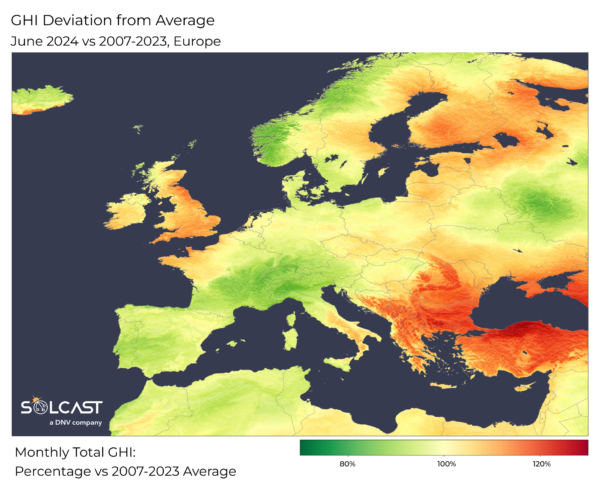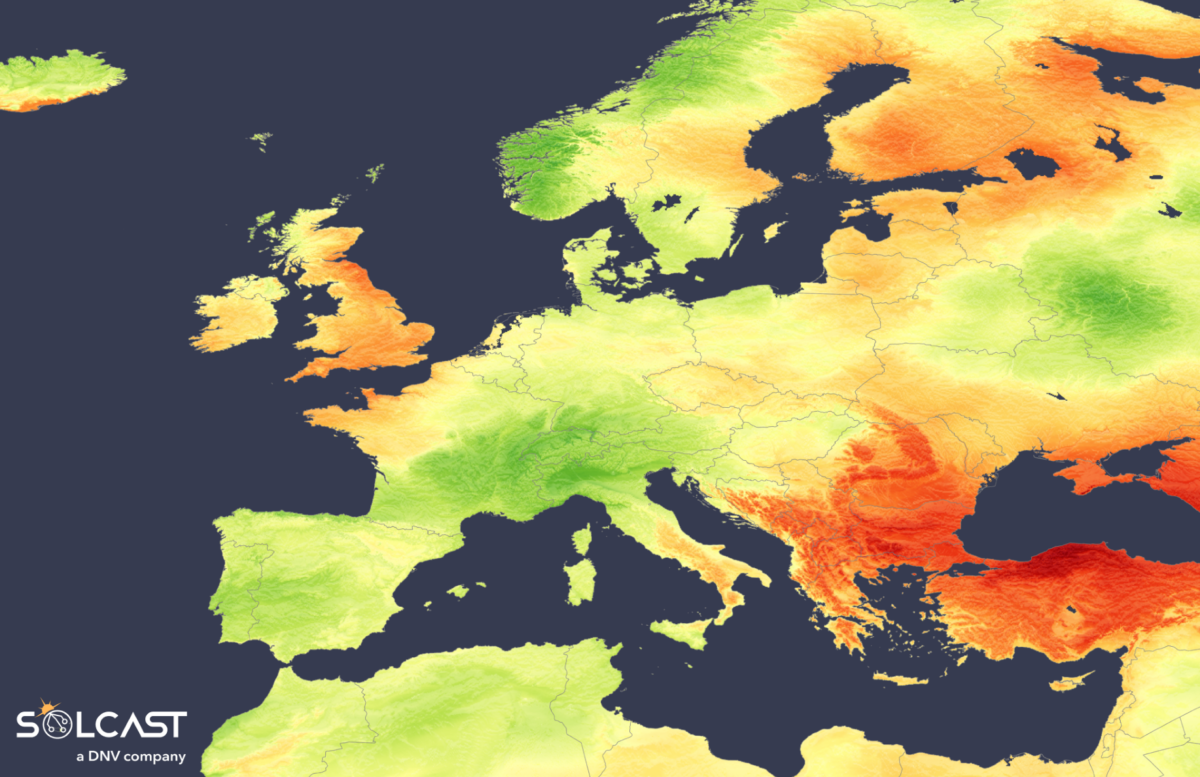June witnessed relatively static weather patterns that created a stark geographical divide in deviation from typical summer weather, according to analysis using the Solcast API. While most of Western Europe experienced below-average irradiance, Eastern Europe and the
Balkans in particular saw a notable increase, resulting from persistent and static weather patterns. Western Europe was affected by a low-pressure anomaly trapped between a strong Azores high and stable high-pressure systems in Eastern Europe.

In Western Europe, solar irradiance was up to 20% below average, particularly in the Alpine region. The relatively static low-pressure systems drew in warm, moist air from the Mediterranean to create atmospheric instability conducive to widespread storms, thick clouds, and heavy rainfall. In contrast, north-westerly winds kept North Sea moisture offshore of the UK, resulting in clearer skies and up to 15% higher irradiance in the south and east than normal throughout June.

The impact of these conditions through June has impacted solar generation across Europe. Solcast modeling of the hypothetical effects of past weather on current rooftop solar installed capacity shows the impact that these conditions have had on rooftop solar across the continent. Increased irradiance in Great Britain saw a 6.8% increase in behind-the-metre solar PV generation compared to average June conditions from 2014-2024. Conversely, France and Germany experienced a 5.5% decrease in behind-the-metre solar generation for a typical June.

Solar resources in Eastern Europe and the Balkans benefited from a high-pressure anomaly that suppressed typical summertime convection, leading to dry and sunny skies, although also several heatwaves. Greece and Turkey, close to the Mediterranean, saw irradiance levels 20-30% above the typical June. Further north, Finland experienced irradiance levels 10% above average, also accompanied by heatwave conditions.
Overall irradiance across the continent is likely to peak over June and July for the year as the Solstice on June 20 marked the sun's highest point in the Northern Hemisphere.
Solcast produces these figures by tracking clouds and aerosols at 1-2km resolution globally, using satellite data and proprietary AI/ML algorithms. This data is used to drive irradiance models, enabling Solcast to calculate irradiance at high resolution, with typical bias of less than 2%, and also cloud-tracking forecasts. This data is used by more than 300 companies managing over 150GW of solar assets globally.
The views and opinions expressed in this article are the author’s own, and do not necessarily reflect those held by pv magazine.
This content is protected by copyright and may not be reused. If you want to cooperate with us and would like to reuse some of our content, please contact: editors@pv-magazine.com.



By submitting this form you agree to pv magazine using your data for the purposes of publishing your comment.
Your personal data will only be disclosed or otherwise transmitted to third parties for the purposes of spam filtering or if this is necessary for technical maintenance of the website. Any other transfer to third parties will not take place unless this is justified on the basis of applicable data protection regulations or if pv magazine is legally obliged to do so.
You may revoke this consent at any time with effect for the future, in which case your personal data will be deleted immediately. Otherwise, your data will be deleted if pv magazine has processed your request or the purpose of data storage is fulfilled.
Further information on data privacy can be found in our Data Protection Policy.